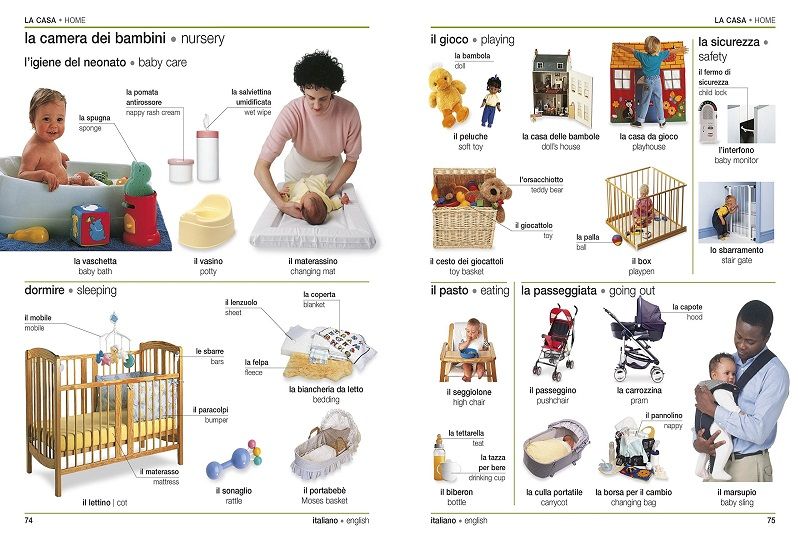How To Learn Italian as a Visual Learner
This article will discuss how to learn Italian as a visual learner: how to make the most of your visual learning style when learning Italian grammar and vocabulary, and how to learn to speak Italian and practice Italian listening comprehension when you are not an auditory learner.

Everyone learns languages differently; we all have different learning styles. I am a visual learner. If you read textbooks and taking notes, enjoy videos and graphics, and have trouble processing information that is only given verbally, you might be too.
This article will discuss how to learn Italian as a visual learner: how to make the most of your visual learning style when learning Italian grammar and vocabulary, and how to learn to speak Italian and practice Italian listening comprehension when you are not an auditory learner.

What Is a Visual Learner?
How do you know if you are a visual learner? A visual learner is someone who needs to see things to learn them. Traits of visual learners include:
- A good memory for things you have seen, such as books and images
- Good organisational skills
- A tendency to take notes and color-code
- Difficulty understanding verbal instructions
- Making lists
- Wanting explanations for everything
Not all of these things will apply to you, for example, I am not very good at organising things.

Visual Learner Strengths: Vocabulary
As a visual learner, the more visual aspects of Italian language learning (i.e. vocabulary, grammar, reading and writing) will probably come easily to you. You should particularly focus on vocabulary, as vocabulary is key to basic comprehension of any language, including Italian.
Use Language Apps
Apps like Duolingo and Memrise will teach you Italian vocab and basic grammar using visual methods. They will also sound out words for you, which will help you associate Italian words with their sounds.
Memorize Lists
As a visual learner, lists are your friend. Memorizing lists of useful vocab and irregular verbs (e.g. irregular past participles) will quickly improve your Italian.
You can do this three ways:
- On an app or website (for example, Memrise has lots of lists, and allows you to create your own).
- The old-fashioned way: writing the Italian and English side by side and covering the English up (or vice-versa), until you have memorized the translations.
- Flash cards: write the Italian on one side and the English on the other. Speechling has its own Italian Vocabulary Flashcards you can use.
Speechling's Phrasebook also contains vocab that you might find useful.
Use a Visual Dictionary
Dictionaries in general are very useful for visual learners. But visual dictionaries are especially handy. Visual dictionaries are books or websites with a series of scenes in which everything is labelled.
Italian visual dicionaries for English speakers are produced by DK and Collins. You can also find some visual dictionary scenes on Pinterest or even make your own by drawing or printing out a scene which contains vocab items that you want to learn and writing the Italian words next to them.
Another great visual vocab learning method is putting post-it notes on household items with their Italian names on them.

Visual Learner Strengths: Grammar
As a visual learner, you may feel the need to have everything explained. This is perfect for grammar which often involves long, complicated explanations. Having a good grasp of Italian grammar, along with vocab, will make it easier for you to learn to speak Italian.
Read Grammar Textbooks and Websites
Your learning style means that you will be able to easily pick up Italian grammar concepts from grammar textbooks and websites.
The best websites for learning Italian grammar are:
If you prefer to learn offline, Gramm.it for English Speakers is a very good Italian grammar textbook and workbook.
Do Grammar Excercises
However, just reading about grammar will only get you so far. You need to do as many grammar excercises as possible to entrench the grammar concepts that you have read about.
Some of the Italian grammar websites mentioned above (such as One World Italiano) have grammar excercises you can do, and you can also use workbooks such as Italian Verb Drills or Practice Makes Perfect: Italian Pronouns and Prepositions.
Write Out Verb Conjugations
As a visual learner, writing out your Italian verb conjugations over and over will help you memorize your Italian verbs. Though this method sounds boring, it is an effective way of learning your conjugations, especially if you are impatient with fill-in-the-blank style excercises.

Visual Learner Strengths: Reading and Writing
Reading is quite a passive way of learning Italian. However, it can really help your vocab acquisition and expose you to grammar structures or idioms that you haven't seen before.
As a beginner, you might need to use a website like Lingq that helps you with the vocab. Later, you can try reading Italian Wikipedia, internet articles that interest you or even Italian books. Reading on a wide range of topics will expose you to the most new vocabulary.
To read anything complicated, yuou will need a dictionary. If you are working on a computer, Wordreference is the best online dictionary, with plenty of examples of words in context, and information about formality and practical usage. Wordreference also comes with a forum so you can learn more about the semantics of a word.
Writing
Writing Italian is the visual learner's version of speaking Italian: it is an excercise that tests your knowledge of vocabulary and grammar as well as your overall acquisition of the language. It is especially useful for practising grammar constructions you have learned. Better still, it's completely visual.
If you think writing in Italian will help you, you can try writing a certain number of words a week, or keeping your diary in Italian. If you use Microsoft Word, you can download Italian proofing tools to help you with typos or grammatical errors.

Visual Learner Weaknesses: Listening Comprehension and Speaking
If you find listening difficult, then you may struggle with listening comprehension and speaking in Italian. I certainly do! However, there are ways to make the auditory side of Italian easier for visual learners (and not just having great grammar and vocabulary).
Learn the Theory of Italian Pronunciation
As a visual learner, you may not automatically pick up Italian pronunciation, which is a problem because without good pronunciation, you will neither be understood in or understand Italian . However, there are rules for how to pronounce Italian just as there are rules for Italian grammar, and once you learn these, Italian pronunciation will make much more sense.
One of the best ways to learn Italian pronuncation is watch one of the many videos on Youtube about it, such as this one by Italy Made Easy. If you want something slightly more visual, there are also some good articles explaining Italian pronunciation, such as this article on Wikibooks, or this Ultimate Italian Pronunciation Guide.
Watch Videos for Listening Comprehension
As language learners, we are often have to practice listening comprehension without any visual cues, which is a problem for visual learners. Therefore, what you should try is watching Youtube videos for listening comprehension. This allows you to pick up on visual cues and also use captions if you want, at least at first.
There are plenty of good channels for language learners, such as:
Speechling also offers an Italian Multiple Choice Quiz with written as well as spoken sentences as prompts.
Practice Speaking as Much as You Can
Speaking is the hardest part of Italian language learning for a visual learner. However, like writing, it's also one of the most important. If you can get the hang of speaking, everything else falls into place.
How to you learn to speak Italian as a visual learner? You practice. A lot. Preferably with Italian native speakers. You could even do an Italian language partner exchange.
But if you can't find a native Italian speaker, Speechling has lots of resources for you to practice speaking Italian. Speechling's Italian Dictation Practice and Italian Multiple Choice Quiz comes with visuals that show you how close your pronunciation comes to a native speaker's which you may find helpful as a visual learner. Speechling also offers you a native Italian language coach, which will help you gain Italian fluency (and good pronunciation) quickly even if you're not a natural Italian speaker.

Conclusion
Being a visual learner puts you in a good position to learn Italian by helping you with many aspects of language learning, including vocab and grammar. While being a visual learner makes listening comprehension and speaking more diffuclt, there are ways to practice these activities within the visual learning style.
